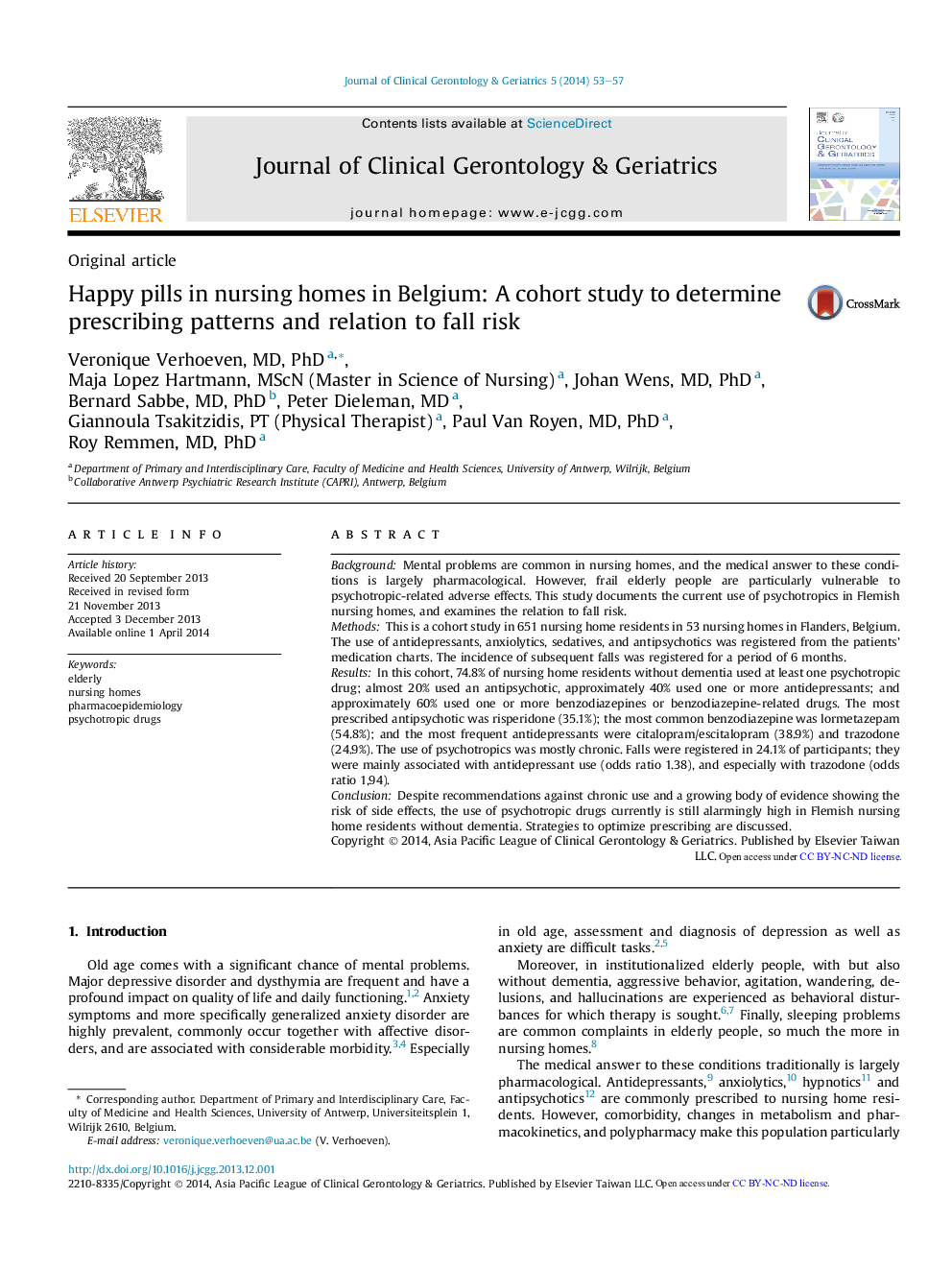| Article ID | Journal | Published Year | Pages | File Type |
|---|---|---|---|---|
| 3325780 | Journal of Clinical Gerontology and Geriatrics | 2014 | 5 Pages |
BackgroundMental problems are common in nursing homes, and the medical answer to these conditions is largely pharmacological. However, frail elderly people are particularly vulnerable to psychotropic-related adverse effects. This study documents the current use of psychotropics in Flemish nursing homes, and examines the relation to fall risk.MethodsThis is a cohort study in 651 nursing home residents in 53 nursing homes in Flanders, Belgium. The use of antidepressants, anxiolytics, sedatives, and antipsychotics was registered from the patients' medication charts. The incidence of subsequent falls was registered for a period of 6 months.ResultsIn this cohort, 74.8% of nursing home residents without dementia used at least one psychotropic drug; almost 20% used an antipsychotic, approximately 40% used one or more antidepressants; and approximately 60% used one or more benzodiazepines or benzodiazepine-related drugs. The most prescribed antipsychotic was risperidone (35.1%); the most common benzodiazepine was lormetazepam (54.8%); and the most frequent antidepressants were citalopram/escitalopram (38.9%) and trazodone (24.9%). The use of psychotropics was mostly chronic. Falls were registered in 24.1% of participants; they were mainly associated with antidepressant use (odds ratio 1.38), and especially with trazodone (odds ratio 1,94).ConclusionDespite recommendations against chronic use and a growing body of evidence showing the risk of side effects, the use of psychotropic drugs currently is still alarmingly high in Flemish nursing home residents without dementia. Strategies to optimize prescribing are discussed.
